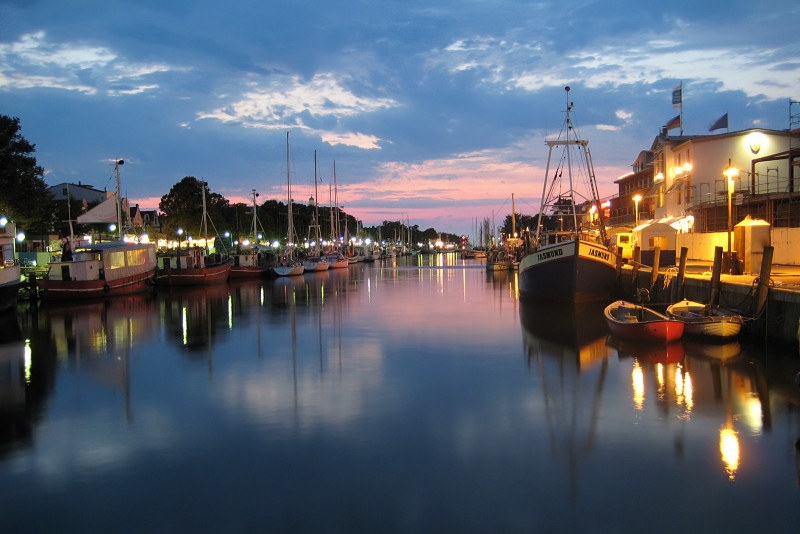The Erie Canal, completed in 1825, is a historic waterway in New York connecting the Hudson River and Lake Erie. It was the first navigable link between the Atlantic Ocean and the Great Lakes, significantly lowering transportation costs. This facilitated the settlement of the Great Lakes region, fueled westward expansion, and boosted New York's economy. Its impact on trade, migration, and regional development was transformative, establishing it as a pivotal infrastructure project in American history.
1902: Abolishment of Tolls
Around 1902, tolls on the Erie Canal were abolished, which had an impact on its competitiveness with railroads.
November 3, 1903: New Yorkers Authorize Canal Expansion
On November 3, 1903, New Yorkers authorized an expansion of the Erie Canal at a cost of $101,000,000.
1905: "Low Bridge, Everybody Down" Written
In 1905, Thomas S. Allen wrote the popular song "Low Bridge, Everybody Down" to memorialize the canal's early days when barges were pulled by mules.
1905: Barge Canal Construction Begins
In 1905, construction began on the "Barge Canal," a major expansion of the Erie Canal. This project involved abandoning over half of the original canal route to create a modernized waterway.
1905: Construction of the New York State Barge Canal Began
In 1905, construction of the New York State Barge Canal began.
1918: Completion of Barge Canal
In 1918, construction of the "Barge Canal" was completed, marking a significant upgrade to the Erie Canal. Over half the original route was abandoned and the modern canal measured 351 miles (565 km) long, 120 feet (37 m) wide, and 12 feet (3.7 m) deep.
1918: Completion of the New York State Barge Canal
In 1918, construction of the New York State Barge Canal was completed at a cost of $96.7 million.
1918: Sections of Old Erie Canal Not Used
In 1918, sections of the Old Erie Canal that were no longer used were owned by New York State or ceded to counties or municipalities.
1951: Freight Traffic Peak
By 1951, freight traffic on the Erie Canal reached a total of 5.2 million short tons (4.7 million metric tons).
1951: Peak Commercial Shipping
Commercial shipping along the Erie Canal system peaked in 1951 following the opening of the barge canal.
1959: Opening of St. Lawrence Seaway
In 1959, the St. Lawrence Seaway opened, which led to a heavy decline in commercial traffic on the Erie Canal due to increased competition.
1960: Schoharie Crossing Recognized as National Historic Landmark
In 1960, the Schoharie Crossing State Historic Site, a section of the Erie Canal in Montgomery County, was one of the first sites recognized as a National Historic Landmark.
1992: Rename to New York State Canal System
In 1992, the New York State Barge Canal was renamed the New York State Canal System and placed under the New York State Canal Corporation.
1994: End of Regular Service for Day Peckinpaugh
In 1994, the Day Peckinpaugh, the Erie Canal's last regularly scheduled hauler, ended service.
2000: Erie Canalway National Heritage Corridor Designation
In 2000, Congress designated the Erie Canalway National Heritage Corridor to protect and promote the Erie Canal system.
2004: Controversy Over Private Development Rights Sale
In 2004, the administration of New York Governor George Pataki was criticized when the New York State Canal Corporation attempted to sell private development rights to stretches of the Old Erie Canal for far less than their market value. The deal was later nullified.
2006: Suspension of Recreational Boating Fees
In 2006, recreational boating fees were suspended on the Erie Canal to attract more visitors.
2007: Commercial Shipments in 2007
There were approximately 15 commercial shipments on the Erie canal in 2007.
2008: Re-excavation of the Commercial Slip
In 2008, Buffalo completed the re-excavation of the Commercial Slip, re-watering the Canal's original terminus, making it accessible by boats once again.
2008: Commercial Shipments in 2008
There were approximately 42 commercial shipments on the Erie canal in 2008.
2012: Cargo Shipped in 2012
In 2012, the New York State Canal System as a whole was used to ship 42,000 tons of cargo.
2017: Transfer to New York Power Authority
In 2017, the New York State Canal Corporation was transferred from the New York State Thruway to the New York Power Authority.
2024: Cost of Canal Completion
By 2024, the cost to complete the canal was equivalent to $199 million.
Trending
4 months ago Al Calderon Joins Zachary Quinto in NBC's 'Brilliant Minds' Season 2

7 days ago Reese Witherspoon, Jade Thirlwall, and Aimee Lou Wood Honored at Harper's Bazaar Awards

5 months ago Jordan Davis's Fitness Journey: Peloton, Discipline, and a Transformation for 2025

3 months ago NBA and NBPA support betting limitations; is Michael Porter Jr. a problem?

6 months ago Gigi and Bella Hadid Introduce Their Half-Sister Aydan Nix: A Family Revelation

6 months ago Eagles' Saquon Barkley & Cooper DeJean Showcase Basketball Skills in Viral Moment
Popular

Chuck Schumer is the senior United States Senator from New...

Bernie Sanders is a prominent American politician currently serving as...

XXXTentacion born Jahseh Dwayne Ricardo Onfroy was a controversial yet...

Candace Owens is an American political commentator and author known...

Nancy Pelosi is a prominent American politician notably serving as...

Cristiano Ronaldo often nicknamed CR is a Portuguese professional footballer...
